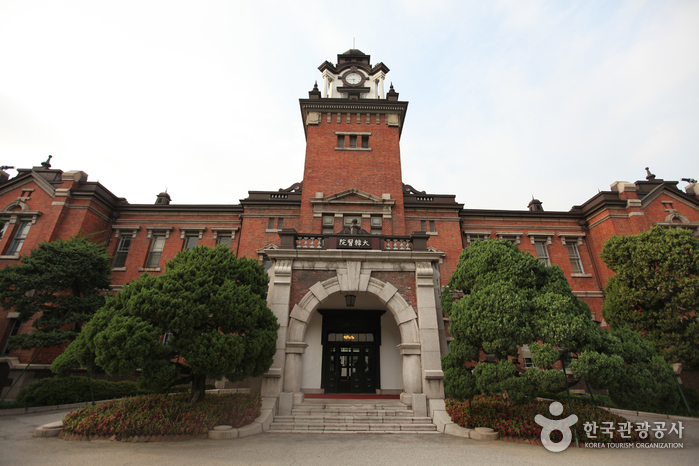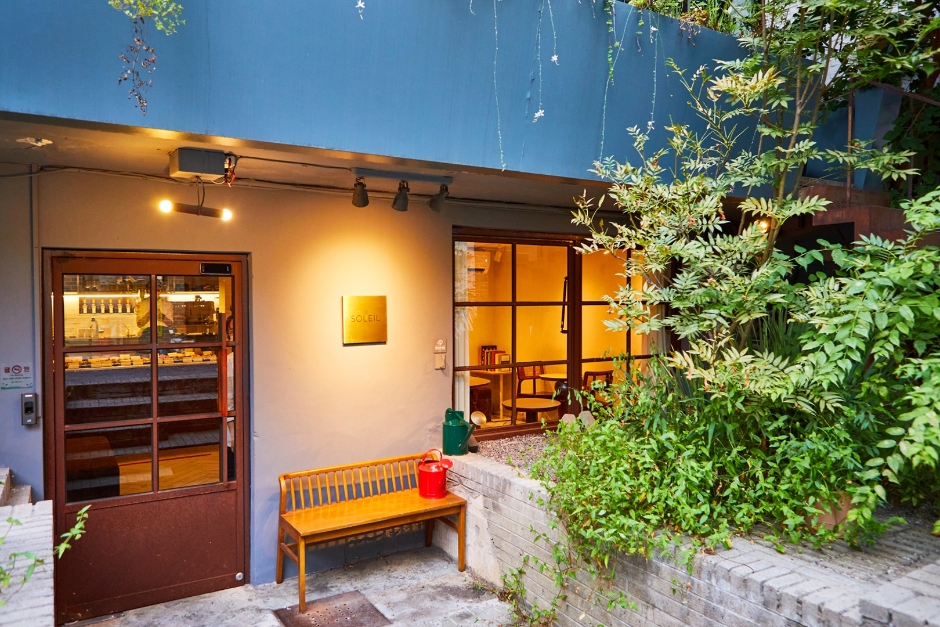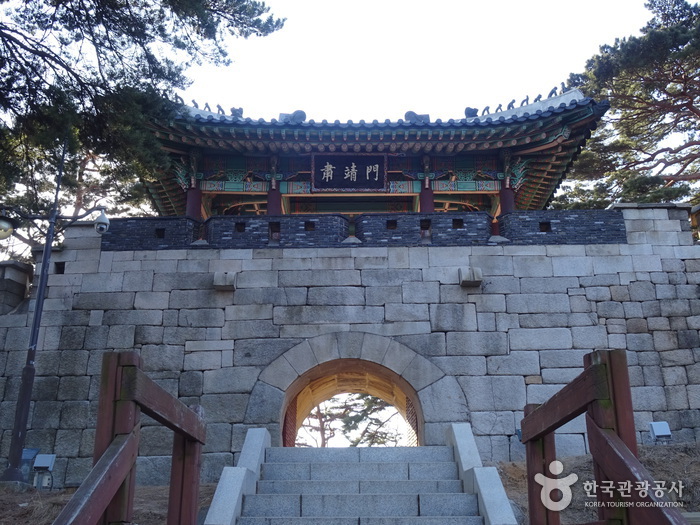Bonafide Jewelry [Tax Refund Shop] (보나파이드주얼리)
6.1Km 2024-06-27
29, Itaewon-ro 54ga-gil, Yongsan-gu, Seoul
-
The Museum of Medicine (서울대학교병원의학박물관)
6.1Km 2024-03-18
101 Daehak-ro, Jongno-gu, Seoul
The Museum of Medicine is located in the building of the former Daehan Medical Center, the oldest modern hospital in Korea. It is a medical museum that provides a comprehensive view of the development of modern medicine in Korea, the history of medical devices, and the transformation of Seoul National University Hospital. Through permanent and special exhibitions, the museum showcases medical artifacts and documents related to the history of medicine.
Man in Black - Itaewon Branch [Tax Refund Shop] (맨인블랙 이태원)
6.1Km 2024-04-18
1F, 4, Itaewon-ro 54ga-gil, Yongsan-gu, Seoul
-
Numbering Flagship Store - Hannam Branch [Tax Refund Shop] (넘버링플래그십스토어 한남점)
6.2Km 2024-06-27
11, Daesagwan-ro 5-gil, Yongsan-gu, Seoul
-
Numbering Flagship Store - Hannam Branch [Tax Refund Shop] (넘버링 플래그십스토어 한남점)
6.2Km 2024-06-27
11, Daesagwan-ro 5-gil, Yongsan-gu, Seoul
-
Seoul Daehan Hospital (서울 대한의원)
6.2Km 2021-12-23
101, Daehak-ro, Jongno-gu, Seoul
+82-2-2148-1842
Daehanuiwon (Daehan Medical Center) is an antique two-story brick building within the grounds of Seoul National University Hospital. It was established under the direct administration of the Uijeongbu (State Council), combining the Gwangjewon (under the Home Ministry), Gyeongseong Medical School and the Korean Red Cross Hospital (under the Royal Household).
Built in the Madubong Hill area, this location where Hamchunwon, the outer garden of Changgyeonggung Palace, once stood in 1484 (15th year of King Seongjong), was also once the site of Gyeongmogung Palace, where King Jeongjo enshrined the mortuary tablet of his birth father Crown Prince Sado Seja in 1776 (the year King Jeongjo ascended to the throne).
These places that held importance for the royal family were destroyed as the Japanese built Gyeongseong Empire University in its place. In 1907, with the announcement of the plan to establish Daehan Medical Center, construction began on the main building, seven wards and affiliated buildings. Construction was completed in November 1908.
The Daehan Medical Center opened in Gwangjewon, but upon Japanese colonization in 1910, its name was changed to the Japanese Viceroyalty Hospital. In 1926, it was included as a part of Gyeongseongjeguk University to become a university hospital. Since the liberation of Korea in 1945, it has been a hospital affiliated with Seoul National University.
Monday Edition [Tax Refund Shop] (주식회사 먼데이에디션)
6.2Km 2024-04-23
1F, Store #1, Store#2 (Hannam-dong), 57, Daesagwan-ro 11-gil, Yongsan-gu, Seoul
-
LE SOLEIL (르솔레이)
6.2Km 2024-03-18
28 Itaewon-ro 54-gil, Yongsan-gu, Seoul
LE SOLEIL is a dessert café in Yeonhui-dong that is small but constantly crowded with customers. About 20 kinds of madeleines of various ingredients fill the showcase. Representative menu items include Rose & Litchi Madeleine, which has a subtle rose scent and attractive litchi flesh, and Nurung Madeleine, which combines cream cheese and scorched rice toppings. Brûlée Madeleines with a luxurious vanilla scent and Truffle Madeleines with a truffle scent are also popular because they are not commonly seen elsewhere. Popular items will likely be sold out early, so it is best to check the information through their official Instagram before visiting.
Sukjeongmun Gate (북악산 숙정문)
6.2Km 2020-06-19
1, Daesagwan-ro, Seongbuk-gu, Seoul
+82-2-747-2152
Of the Four Great Gates (Sukjeongmun, Namdaemun, Dongdaemun, and Seodaemun), established by King Taejo in 1396, Sukjeongmun is called the north gate.
Located to the north of Seoul, this gate, with Gyeongbokgung Palace in the center and Changaemun (Jahamun) to the right, make up the wings of the north gate. Due to the possible danger of the area being damaged from all the pedestrians, the king in 1413 planted pine trees and prohibited passing this area. Henceforth, Sukjeongmun became a scenic walkway until the North Korean Communist infiltration of 1968, which prohibited the passing of all civilians.
The reopening of Sukjeongmun in April of 2006 has led to the opening of Bugaksan Mountain in April of 2007 and is in the process of dividing it into 3 courses. Bugaksan Mountain has been kept well-preserved due to a long period of restriction in this area, and if you climb the mountain, you will be able to see all of Seoul.
![Bonafide Jewelry [Tax Refund Shop] (보나파이드주얼리)](http://tong.visitkorea.or.kr/cms/resource/37/3314337_image2_1.jpg)

![Man in Black - Itaewon Branch [Tax Refund Shop] (맨인블랙 이태원)](http://tong.visitkorea.or.kr/cms/resource/65/2888965_image2_1.jpg)
![Numbering Flagship Store - Hannam Branch [Tax Refund Shop] (넘버링플래그십스토어 한남점)](http://tong.visitkorea.or.kr/cms/resource/25/3314725_image2_1.jpg)
![Numbering Flagship Store - Hannam Branch [Tax Refund Shop] (넘버링 플래그십스토어 한남점)](http://tong.visitkorea.or.kr/cms/resource/95/3313195_image2_1.png)
![yyk [Tax Refund Shop] (와이와이케이)](http://tong.visitkorea.or.kr/cms/resource/67/3313167_image2_1.jpg)

![Monday Edition [Tax Refund Shop] (주식회사 먼데이에디션)](http://tong.visitkorea.or.kr/cms/resource/77/2887777_image2_1.jpg)


 English
English
 한국어
한국어 日本語
日本語 中文(简体)
中文(简体) Deutsch
Deutsch Français
Français Español
Español Русский
Русский